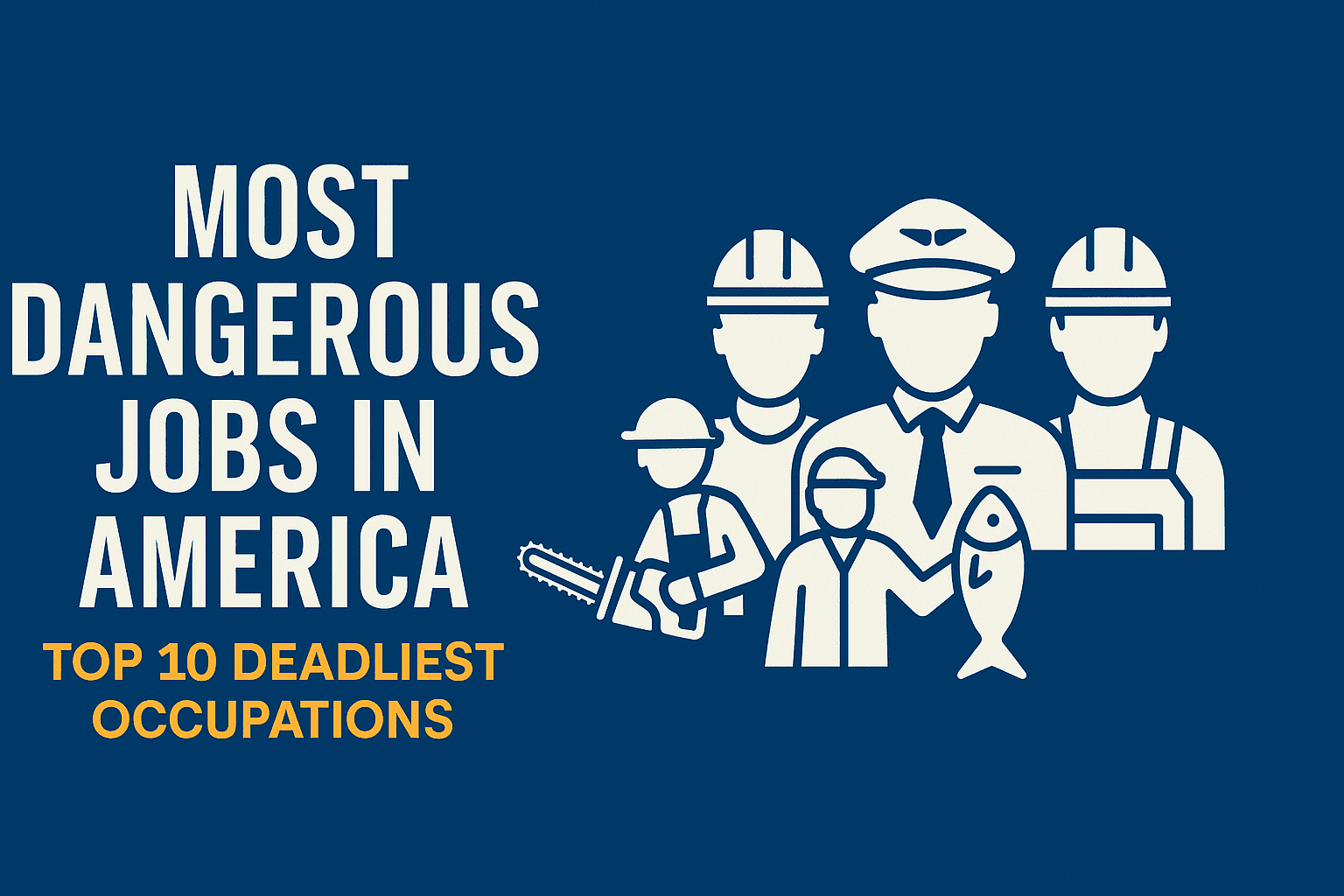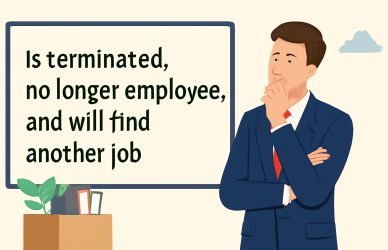What Makes a Job “Dangerous”?
When we talk about the most dangerous jobs in America, we mean occupations where workers face a high chance of serious injury or death. These jobs typically involve operating heavy machinery, working in extreme environments, operating at high altitudes, or spending long hours on the road.
The fatality rate and the number of deaths per 100,000 full-time workers are the best measures of job risk. While the national average rate remains low, some jobs have rates more than 10 to 20 times higher.
The Top 10 Most Dangerous Jobs in America
Below are the top 10 most dangerous jobs in America, ranked by fatality rate and supported by real-world risk factors.
1. Logging Workers
Logging is consistently one of the most hazardous jobs in the U.S. These workers operate heavy machinery, including chainsaws, skidders, and feller-bunchers, in remote, uneven terrain. Falling trees, unpredictable weather, and equipment malfunctions make each workday high-risk. The isolation of logging sites also means that medical help is often hours away, which can turn minor accidents into fatalities.
2. Fishing and Hunting Workers
Commercial fishing and hunting crews face brutal conditions, rough seas, high winds, cold temperatures, and long hours on open water. Drowning, vessel capsizing, and equipment entanglement are constant dangers. Workers often perform physically demanding tasks on slippery decks with minimal rest. Despite the danger, many stay in the industry because of strong pay and deep-rooted traditions in coastal communities.
3. Roofers
Roofers work high above the ground, often in hot sun or icy conditions. Falls from ladders, scaffolds, or roofs are the most common cause of injury or death. They also handle tools like nail guns and heavy materials that can create additional hazards. Safety harnesses and guardrails help, but small contractors or seasonal crews sometimes skip proper protection to save time, making roofing one of the deadliest construction trades.
4. Aircraft Pilots and Flight Engineers
Although commercial aviation is very safe, small aircraft operations, such as crop dusting, firefighting, or air tours, carry far higher risks. Pilots often fly in poor weather, low visibility, and mountainous areas. Fatigue, mechanical issues, and difficult landings also contribute to accidents. Even though these jobs pay well, the fatality rate remains among the highest in the nation.
5. Refuse and Recyclable Material Collectors
Garbage and recycling collectors face danger every single day. They ride on or near moving trucks, lifting heavy bins in fast-paced traffic. Many are injured by vehicles that fail to slow down or by being struck by their own trucks. Exposure to sharp objects, biohazards, and chemicals adds another layer of risk. The job demands strength, alertness, and constant situational awareness.
6. Driver/Sales Workers and Truck Drivers
Truck drivers log thousands of miles across highways and back roads, often under tight delivery deadlines. Fatigue, distracted drivers, poor weather, and road conditions make transportation incidents the leading cause of occupational deaths. Long hours behind the wheel can also cause health issues like sleep deprivation, which further raises accident risk. Despite being essential to the economy, truck driving remains one of the deadliest jobs by total fatalities.
7. Electrical Power-Line Installers and Repairers
Working around high-voltage electricity is inherently dangerous. Power-line workers climb tall poles and towers, sometimes during storms or in emergency restoration work. One small mistake can come into contact with a live wire or a fall, which can be fatal. They also face hazards from equipment, electrocution, and rough terrain. Extensive training and protective gear are critical, but risk never disappears entirely.
8. Construction Laborers and Helpers
Construction sites are full of hazards, mostly open edges, heavy materials, cranes, and fast-moving machinery. Laborers face falls, being struck by objects, or getting caught between equipment. Many work long hours outdoors in heat or cold, increasing fatigue and mistakes. Even with OSHA regulations, smaller sites sometimes overlook safety procedures, contributing to construction being among the top industries for workplace fatalities.
9. Agricultural Workers
Farm and ranch workers deal with unpredictable animals, large machinery, and extreme weather. Tractor rollovers, equipment entanglement, and pesticide exposure are frequent dangers. Remote work sites can make emergency response difficult, and language barriers or seasonal employment can limit access to safety training. Agriculture continues to rank high in both fatal and nonfatal injury rates across America.
10. Grounds Maintenance Workers
Landscapers, gardeners, and tree-trimmers often work near roads, around heavy mowers, and with cutting tools. Falls from trees, electrocution from power lines, and being struck by vehicles are common causes of death. Working outdoors year-round exposes them to extreme heat and dehydration risks. While the job appears simple, it’s consistently among the top 10 for workplace fatalities.
Why These Jobs Are So Dangerous
Most fatal incidents across these occupations stem from a few recurring factors:
- Transportation incidents: vehicle crashes and workers struck by moving vehicles.
- Falls: especially from heights in roofing and construction.
- Contact with machinery: being crushed, caught, or struck by equipment.
- Exposure: to electricity, chemicals, or extreme temperatures.
These risks highlight the importance of training, protective gear, and a strong safety culture across industries.
How to Make Dangerous Work Safer
Safety improvements can save lives in every one of these professions:
- Enforce proper fall protection and equipment inspections.
- Implement fatigue management and rest policies for drivers to ensure their well-being and safety.
- Use lockout/tagout procedures for all electrical or mechanical repairs.
- Encourage near-miss reporting to spot hazards early.
- Provide regular safety training tailored to job-specific risks.
A strong safety culture supported by both workers and management is the most effective way to reduce workplace deaths.
FAQ’s:
Q: Which job has the most total deaths?
Truck driving consistently leads in total fatalities due to its large workforce and highway risks.
Truck driving consistently leads in total fatalities due to its large workforce and highway risks.
Q: Which job has the highest fatality rate?
Logging and fishing workers have the highest risk per worker.
Logging and fishing workers have the highest risk per worker.
Q: Why are outdoor jobs so deadly?
Extreme weather, unpredictable conditions, and limited access increase danger levels.
Extreme weather, unpredictable conditions, and limited access increase danger levels.
Q: Are these jobs getting safer?
Yes, but slowly. Fatality rates have improved slightly, yet risk remains high in these top 10 occupations.
Yes, but slowly. Fatality rates have improved slightly, yet risk remains high in these top 10 occupations.






